Review of petunias of the "Typhoon" series
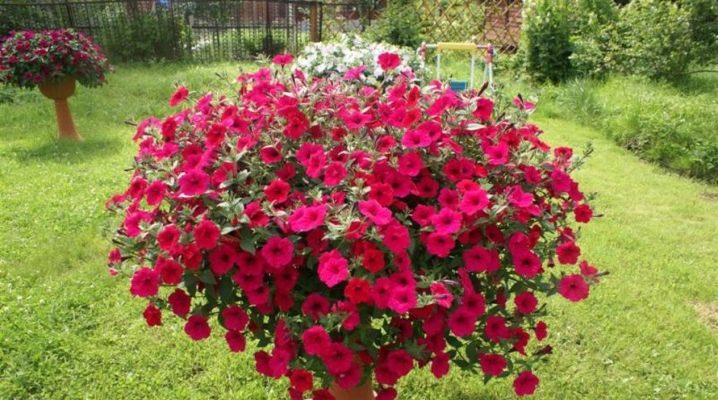
Petunia belongs to the ampelous type of plants, that is, it is intended for growing in hanging containers. However, if desired, it can be a wonderful decoration for alpine slides, lawns and flower beds. It is believed that petunia seeds were brought to Europe from South America in the 18th century. Since then, scientists have invented many hybrid varieties, one of which is the Typhoon.
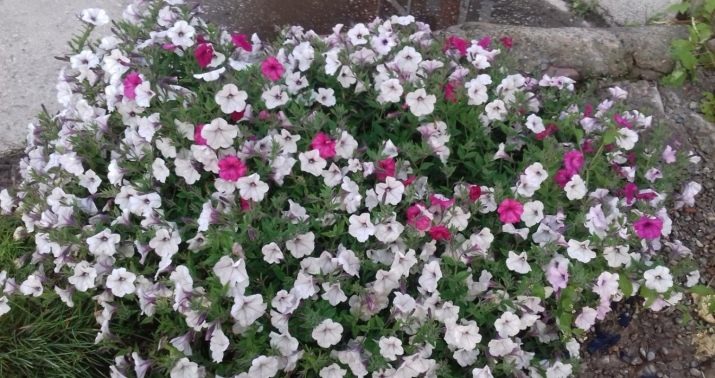
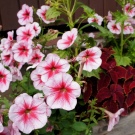
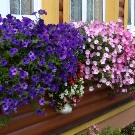
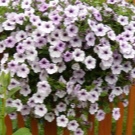
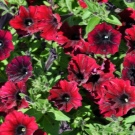

Peculiarities
Petunia flowers have a branched root system with shallow laying. Thanks to her, the plant grows quickly and in a few weeks is able to fill all the free space. Stems are undersized, no more than 30 cm high, creeping.
When blooming, single flowers appear no more than 15 cm in diameter, resembling a bell in shape. Depending on the variety, the edges of the flowers can be smooth or wavy. When the petunia fades, a box of seeds appears in place of the flower. They are very small, one such box can contain up to 300 seeds.
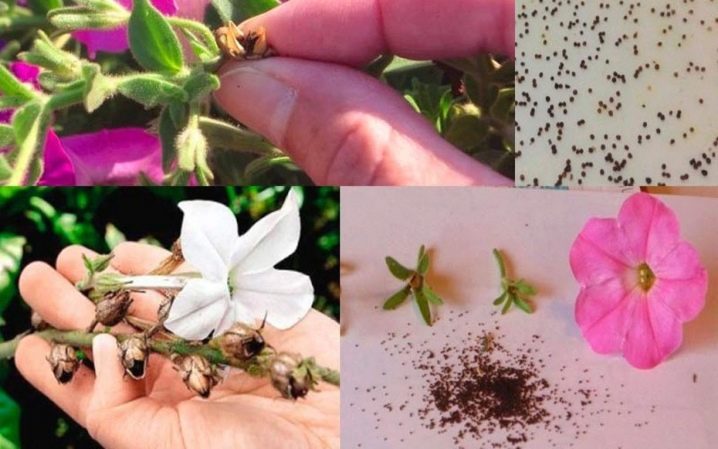
The Typhoon variety is characterized by increased endurance compared to other varieties due to the denser texture of the petals. The plant has a delicate pleasant scent that will spread its fragrance over several meters. Moreover, this variety is not susceptible to powdery mildew disease, which is a real disaster for many garden plants.
One of the advantages of the Typhoon variety is its fast germination. It begins to bloom about 2 weeks earlier than other varieties. Flowers appear evenly and at once throughout the bush.
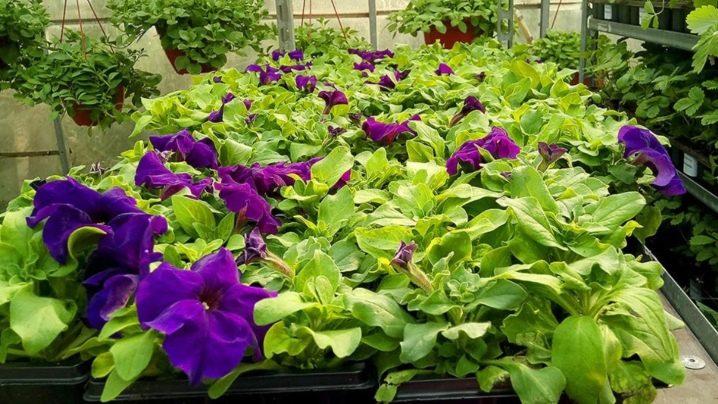
Petunia "Typhoon" is more demanding on the conditions of its keeping than other varieties... For example, a flower does not like excessive moisture and does not tolerate winds at all. From strong impulses, the stems and leaves of the plant break, so the flower feels more comfortable in a hanging flowerpot under a canopy, where there is a lot of sun, but there is no direct effect on the plant. Sandy or clayey soil is suitable for petunias.
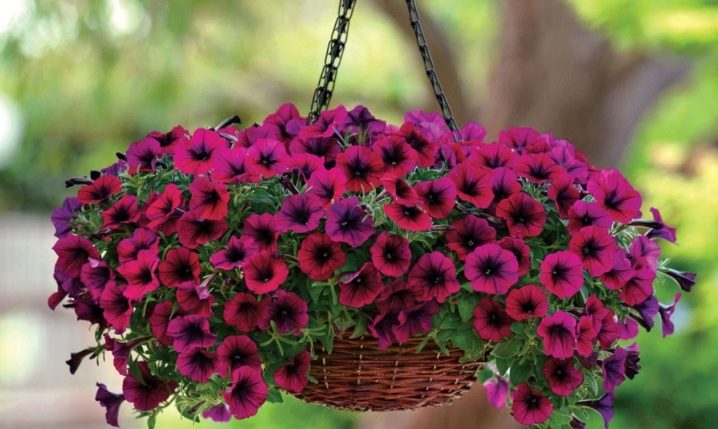
Planting advice
Sowing petunia seeds for seedlings can be started from the end of January. The sooner the seeds are planted, the sooner the plant will gain full strength and begin to bloom. Seeds germinate at room temperature and a regular light source.
To ensure constant humidity, it is recommended to cover the containers with seeds with foil or glass, but you need to regularly ventilate the plant daily for an hour.
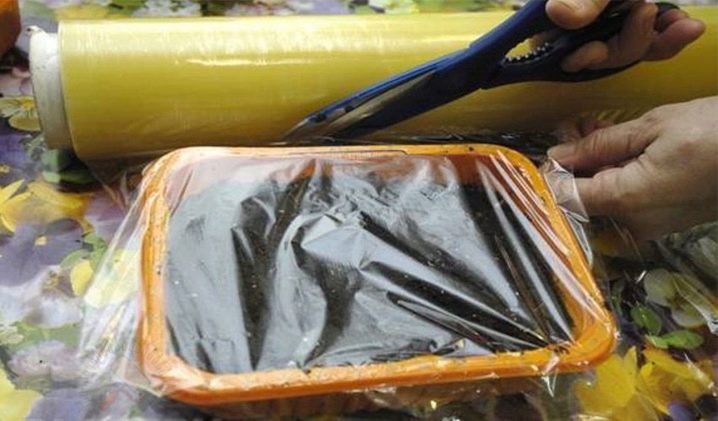
Before covering the plant again, Condensation must be removed from glass or film. Seedlings of shoots in separate pots occurs when they reach at least 10 cm in height and when 2-3 leaves appear. When the sprouts first appear, they will still be too weak, so they should not be watered with a watering can, as the water jet can break them.
Moisten the soil around young shoots should warm water from a spray bottle twice a day... When the threat of frost passes and a constant daylight hours of at least 14 hours are established, you can plant the plants in open ground.
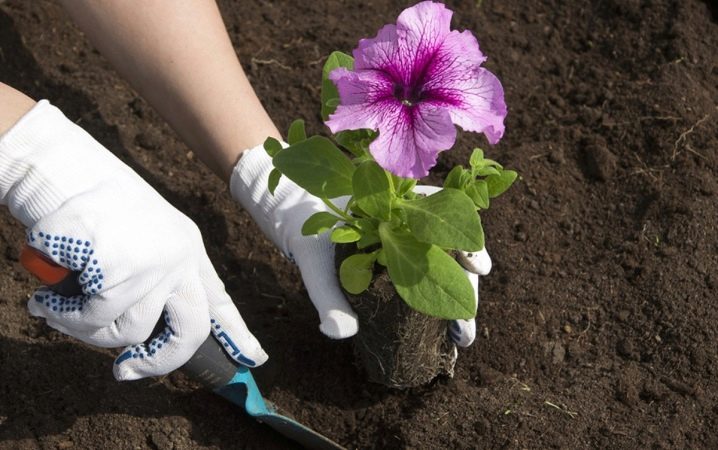
Before filling the soil into the container, it is recommended to fill 1⁄2 of the volume with dry grass and branches. This will be a kind of drainage that will prevent water from stagnating near the roots. After that, you can fill up the soil. Thus, planting this petunia variety will require less soil than other varieties.
But you need a lot of seeds to get ovaries, and this must be taken into account when planting.
For petunia to bloom well, it is necessary to regularly remove dead flowers and dry branches, loosen the ground around the plant. When it blooms for the first time, you need to trim the bush. And this must be done 2-3 times during the entire flowering period. Otherwise, the flowers will begin to shrink.
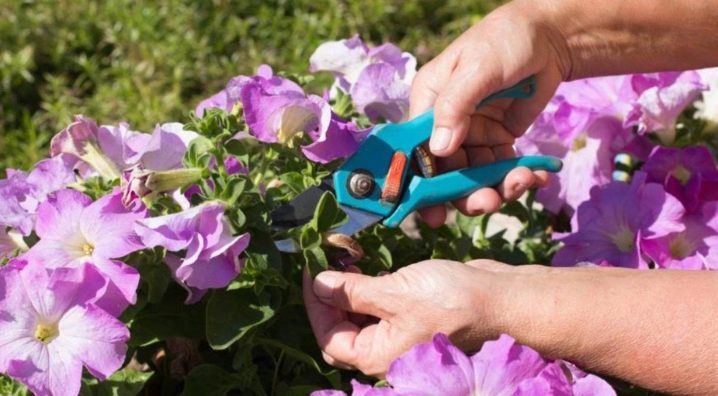
As for fertilizers, at the beginning of summer, when the plant is just gaining strength, it is necessary to introduce nitrogen and phosphate into the soil in order to strengthen the root system and increase the leaf mass, and closer to the middle of summer, when the plant begins to bloom actively, it is necessary 1-2 times add potassium for a week.
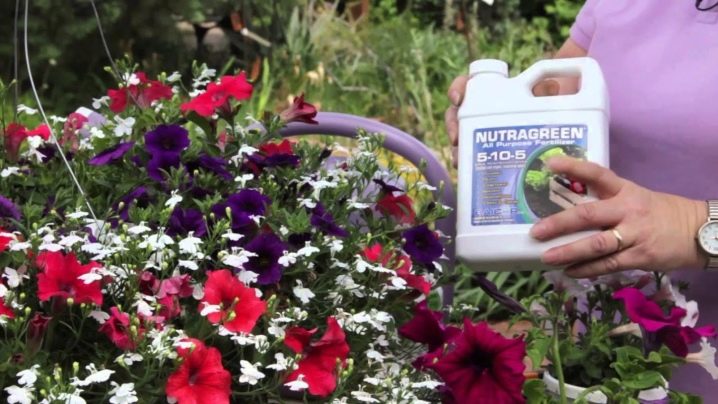
To make petunia more hardy, it must be hardened before planting in open ground already at the seedling stage. To do this, young shoots need to be taken out into a room with a temperature of +10 C - at first by 10-15 minutes, gradually increasing the time every day by 5 minutes.
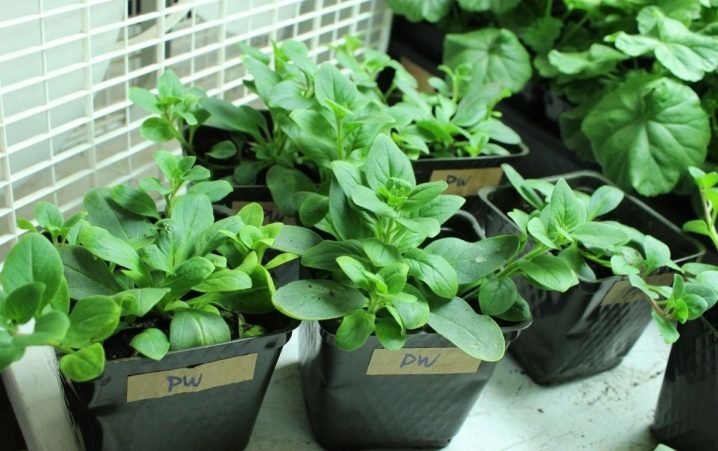
Petunia variety "Typhoon" consists of several series, among which the most popular are Silver, Cherry and Red Velor. Let's get acquainted with these types in more detail.
Varieties
Typhoon Silver
Depending on the manufacturer, the name Typhoon Silver or Tidal Silver may appear. This series is bushy and has the longest flowering period. Flowers are white or pinkish in color, 5-7 cm in diameter. Flowering begins at the end of May and lasts almost until the first snow.
The variety tolerates a lack of moisture and heat very well, therefore it does not need frequent abundant watering. thanks to a strong root system, which is able to independently provide itself with access to water. Typhoon Silver has long, powerful stems up to 70 cm in height. The bush can grow up to 1.5 m wide, but this requires wide dishes with a volume of about 30 liters.
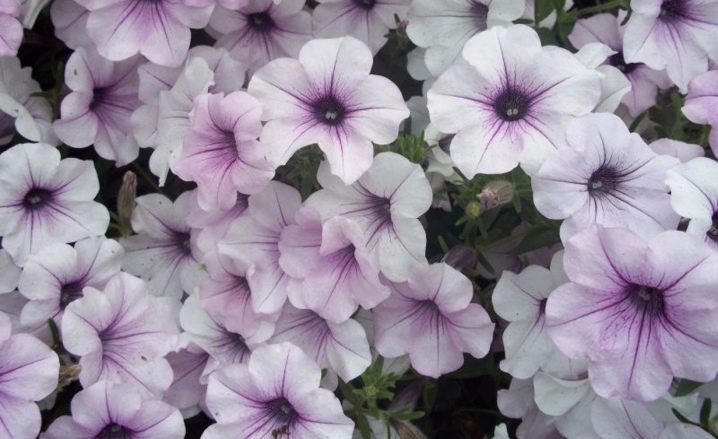
Typhoon Cherry
This variety is a fast growing shrub with medium sized cherry blossoms. Like all representatives of the Typhoon variety, the plant has deep roots. The seedlings take root very easily and give new shoots within a few weeks after planting.
Like the previous species, "Typhoon Cherry" independently is able to get to the deep layers of the soil and get water, so it needs minimal watering.
This plant is of a cascade type, therefore it is recommended for planting in a high flowerpot or in a hanging planter. Since the plant grows rather quickly, you should immediately choose a spacious container for planting. When planting "Typhoon Cherry" on a flowerbed, the seedlings should be planted from each other at a distance of 35-70 cm. For planting, you should choose a sunny place. The plant needs additional feeding only at the initial stage after planting, then it is able to get food on its own.
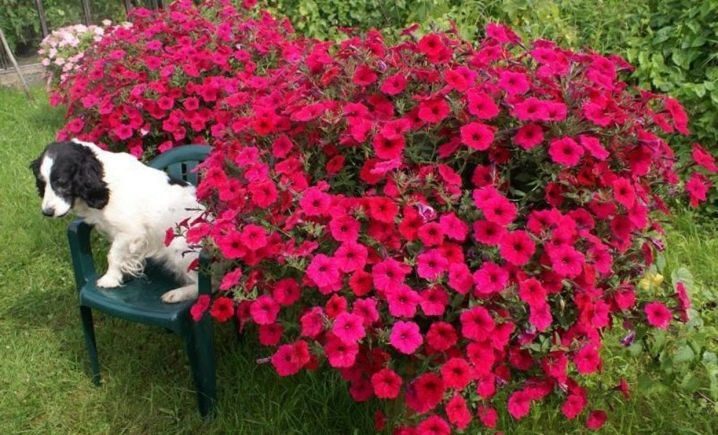
Typhoon Red Velor
Depending on the manufacturer, the name "Tidal F1 Red Velor" can also be found. The plant is classified as ampelous cascading. It is often chosen for decorating summer cottages, as well as for decorating city flower beds. The variety is distinguished by its higher height compared to other species: it can reach half a meter. When blooming, many flowers appear, 5-6 cm in diameter. The color of the Typhoon Red Velor petunia can be very different: from white and pale lilac to bright red and dark purple.
The variety is practically unaffected by fungi and other microbes, resistant to natural disasters. When planting, it is necessary to maintain a distance between the bushes of 30-60 cm - this will significantly improve the appearance of the plant. With proper care, the bush can fill an area of up to 1.5-2 sq. m.
This series has very small seeds, so it can be found on sale in the form of compressed dragees. This makes the planting process much easier.
In case of damage, the broken stems are not removed, since they have the ability to recover well.

You will learn more about the rules for caring for a Typhoon series petunia by watching the following video.







































































































The comment was sent successfully.